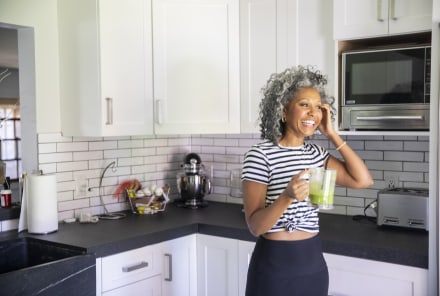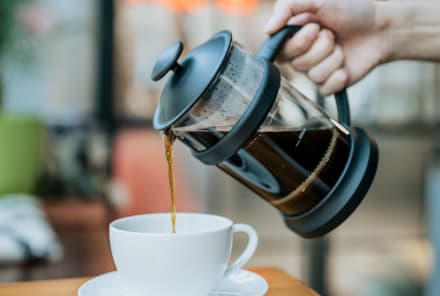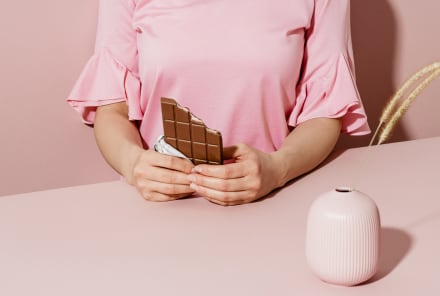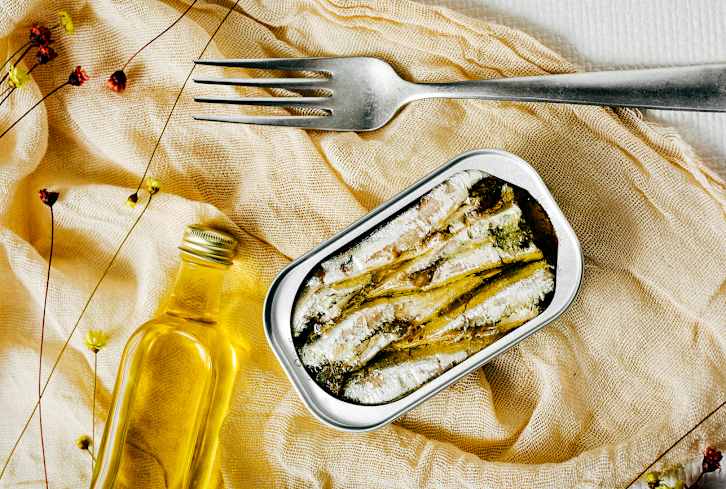Advertisement
A Beginner's Guide To Essential Oils


A powerful healing modality, aromatherapy has recently blossomed into a thriving section of herbal medicine. Aromatic plant medicine involves working with some of nature's strongest powers and is about much more than limiting one oil to a single therapeutic benefit (i.e., lavender essential oil is for sleep).
Here’s your detailed, expert-backed beginner's guide to the fundamentals of finding the right essential oils and using them safely.
How to choose the right essential oils:
1. Identify the problem.
This is where everyone should start. Why do you want to start using essential oils? Do you have a physical problem? Is it chronic or acute? Perhaps there is no pain-point, and you’re looking to evoke a state of being, like relaxation. Or maybe you're looking to use essential oils to scent cleaning products.
Once you get to the crux of the issue you want to address, it’s much easier to whittle down the thousands of essential oils you can use.
It’s easy to fall into the aforementioned "there’s an oil for that" mentality because many people use similar oils for common ailments. But with aromatherapy, it’s equally important to consider your personal smell preference. For example, spikenard’s sedative effect makes it a go-to for insomniacs. But I know some people who just cannot stomach the smell and would prefer to use lavender or vetiver for sleep.
Aromatherapy is an intimately personal practice; It’s not one size fits all when it comes to blending.
2. Consider energetics.
For those who turn to essential oils for a specific therapeutic goal or health benefit, considering energetics may seem baffling. While you need not work on an energetic, soul level to reap the benefits of aromatherapy, it’s useful to understand the chemistry.
Evidence from Ancient Egypt tells us that aromatic oils were likely being used before 4500 B.C. The ancient Egyptians are renowned for their knowledge of cosmetics and fragrant ointments—with their most famous herbal preparation being "Kyphi," which was a multipurpose spiritual blend of 16 ingredients.
As the Egyptians knew so well, oils have different properties that we don’t always consider. Some are heating, others cooling, and some resonate with us in different parts of our bodies.
For example, 1,8 cineole, also known as eucalyptol, is a chemical found largely in eucalyptus and rosemary. Additionally, the chemical menthol triggers the cold-sensitive TRPM8 receptors in the skin and is responsible for the cooling sensation1.
Peppermint essential oil is intensely freshening and invigorating, in part due to its high menthol content—so much so that many aromatherapists suggest working with the hydrosol to avoid safety issues (particularly in children).
As some oils cool, some can also bring on the heat. Oils high in phenols, containing chemicals like carvacrol, eugenol, and thymol, are known to be hot. These oils should be used with caution and include oregano, thyme, cinnamon leaf, and clove. More warming oils include yarrow, sweet marjoram, ginger, basil, and black pepper.
Potentially knowing if an oil identifies with feminine yin or masculine yang energy, or helps ground or open certain chakras, can provide even more support.
3. Combine oils.
Synergy is everything. While individual oils are potent, combining the aromatic molecules of different essential oils allows them to work together and results in greater benefit than the sum of individual effects. From a holistic perspective, I often blend synergies with 3-5 essential oils. At the very least, this blending technique allows me to have a core of the blend, enhancer, and harmonizer.
Blending oils with similar chemical components gives heightened effects. For example, blending ho-wood, rosewood, and Spanish marjoram, which all contain a high percentage of linalool, a monoterpene alcohol, would make a good synergy for sleep and deep relaxation.
4. Know the facts.
While it’s not realistic to expect everyone to know everything about each oil chemotype and potential contraindications, you can really get by with only two pieces of basic information: source and price. Let packaging be your first clue!
There is no regulatory body that scientifically evaluates and certifies the purity of essential oils.
On essential oil bottles, though, small, high-quality suppliers will always tell you the Latin binomial (indicating the plant genus and species), where and how the oil was distilled, and whether it’s organic or wild-harvested. The Latin name is important because there are many species of certain plant families, like lavender.
In fact, there are over 250 species of eucalyptus—only eight of which are commonly used in aromatherapy. Knowing where an oil is from is key to understanding environmental factors that alter chemical constituents and aroma.
5. Be wary of cheap oils and gimmicky claims.
Unfortunately, the scene has been set for unethical business practices as large corporate players drive raw material prices to low levels, often forbidding profit to be made.
With rampant adulteration of oils (e.g., cheaper essential oils substituted and falsely labeled—like lavandin for lavender, or a completely synthetic laboratory-made oil labeled as wild-harvested), it’s crucial to be in the know about realistic essential oil prices—particularly for unadulterated, pure, and rare oils. For example, rose, jasmine, and sandalwood being sold in ½-ounce and 1-ounce sizes should raise some eyebrows. A single ounce of rose otto retails for $400 or more!
Given current industry practices, you should also be wary of popular, gimmicky claims. Perhaps the most egregious is using the label "Therapeutic Grade." There is no such thing as "therapeutic grade" or "certified pure" essential oils. There is no regulatory body that scientifically evaluates and certifies the purity of essential oils.
Some large, multilevel marketing brands have even trademarked or copyrighted these promotional sayings, but they are just misleading catchphrases. When purchasing essential oils, ask sellers if they provide data information sheets on their oils. Most quality distillers and retailers provide GC/MS (gas chromatography and mass spectrometry) testing results that show the chemical breakdown of their oils. This objective data can help you assess the quality of an oil when read (and tested!) properly.
6. Think beyond the oils.
Making your own all-natural product? There’s more to it than just essential oils. Many DIY aromatherapy recipes also call for carrier oils and butters, which are just as important to consider. Products have shelf lives—with many energizing citrus essential oils only lasting a year when kept refrigerated (in fact, most essential oils are happiest when cool!) and some common carrier oils are best used before six months to a year after purchase.
Being wary of product expiration can help you avoid safety issues, like skin sensitization and save you from wasting precious ingredients from a spoiled batch. Additionally, when purchasing and using oils, be mindful of their method of application. Gels are the fastest to absorb dermally, but direct inhalation and diffusion can be just as effective depending on your goal.
7. Diffuse, diffuse, diffuse.
An easy way to integrate aromatherapy into your everyday life is through diffusing. I turn to my diffuser for a multitude of reasons—when I want to use essential oils to reduce stress, set an ambience, support sleep, and increase alertness or motivation.
Diffusion refers to a method of transmitting essential oils into the air within a specified area. Diffusing supports a multitude of goals, but it mainly serves two purposes: reducing air microbes and altering mood and emotion. Clinical research shows that diffused lemon essential oil is an affordable intervention that has a positive effect on test anxiety. Additionally, diffusing cinnamon, eucalyptus, and rosemary is an uplifting blend.
There are many diffusers on the market, but I recommend purchasing a jet style nebulizer made out of glass. If you can, avoid diffusers made from plastic that use water as a carrier. Not only are these diffusers harder to clean, but repeated use also leads to degradation as some essential oils eat away at plastic.
Beyond that, most inexpensive diffusers heat by a candle or lamp, and I would consider investing in one that uses cool air to create an aromatic vapor. Heating often changes the chemical structure of essential oils, potentially affecting their aroma and therapeutic benefit.
Based on the process outlined above, here are some of the best essential oils for beginners to start with:
- German chamomile
- Roman chamomile
- Eucalyptus
- Lavender
- Clary sage (not recommended during pregnancy)
- Rosalina
- Helichrysum
- Rose
And here are some of my favorite beginner-friendly recipes that incorporate essential oils:
A cold-busting blend.
Whenever I come down with a nasty cold, I make an aromatic mix with a synergy of three gentle, cooling oils with potentially beneficial respiratory effects that are high in monoterpenes and oxides.
Therefore, I use rosalina, eucalyptus radiata, and german chamomile. My goal is strictly therapeutic—to open up my stuffed nasal passages and help clear my foggy mind as quickly as possible, so I don’t worry too much about loving the aroma. Rosalina is gentle and effective, and eucalyptus radiata is less aggressive than other eucalyptus oils, and its immune system-enhancing properties make it a go-to upper-respiratory tonic that helps alleviate any sinus troubles.
How-To:
Add 6 drops rosalina, 5 drops german chamomile, and 4 drops eucalyptus radiata onto a cotton wick and seal in an aromatic inhaler.
Substitutions:
Feel free to also try other oxide-high nasal-clearing oils like rosemary, tea tree oil, blue gum eucalyptus, green myrtle, and frankincense in your inhaler.
A sleep blend for relaxation.
Every night, I anoint my pulse points with a rollerball blend that supports restful sleep and deep relaxation. Therefore, I look for oils high in esters, monoterpene alcohols, and sesquiterpene alcohols that calm and soothe the nervous and endocrine systems and release muscular and nervous tension. This is a daily blend that allows me to drift off into sleep, so loving the aroma is a must!
I turn to a well-balanced, herbaceous blend of lavender, roman chamomile, and clary sage. All three of these oils are high in esters—promising an instant calming effect on the central nervous system. Lavender and clary sage are also both high in monoterpene alcohols that help nurture balance. Though again, clary sage is not recommended during pregnancy.
How-To:
Add 15 drops lavender, 5 drops roman chamomile, and 10 drops clary sage into a glass roller-bottle and top if off with 10 mL of vanilla-infused jojoba oil.
Substitutions:
Spikenard, vetiver, ylang-ylang, and sweet marjoram are other sleep-supporting oils with which you could blend. I love the aroma of vanilla-infused jojoba, but most other carrier oils (sweet almond, sesame, or grapeseed) would also work.
A moisturizing face serum.
I have thin skin that’s prone to dryness. I want my beauty products to help keep me moisturized and prevent environmental damage and premature aging. I take a holistic approach to my face-care routine, always using essential oils high in esters that soothe dermal inflammation, monoterpenes that enhance dermal penetration, and monoterpene alcohols that are mild and generally well-tolerated by most skin types.
While I always promote and see the value in essential oil synergies, for my daily face serum, I only use two oils: Helichrysum italicum and rose. Sometimes, I’ll add sandalwood to round out the aroma.
Helichrysum is one of my favorite scents, so I like using it every day. Rose is the queen of luxurious essential oils and a true aromatic treat. Rose helps reduce inflammation and redness2, while nicely prepping the skin for other products.
How-To:
Add 6 drops helichrysum and 3 drops rose into combined ½-ounce rosehip-seed oil and ½ ounce argan oil. Use on face after cleansing.
Substitutions:
In a face serum, balm, or cream, try other essential oils heavy in monoterpene alcohols, like lavender and rose geranium; or sesquiterpene alcohols, like German chamomile, sandalwood, and patchouli; and ketones, like rosemary ct. verbenone and manuka. Additionally, based on your skin type, other carrier oils may be suitable. For acne or oily skin, try grapeseed or hemp oil, and for normal or combination skin, try using apricot kernel or jojoba.
The bottom line.
Essential oils are powerful plant medicines that can support well-being in a number of ways. Once you find the right oils for your needs and preferences, the sky is really the limit.


















